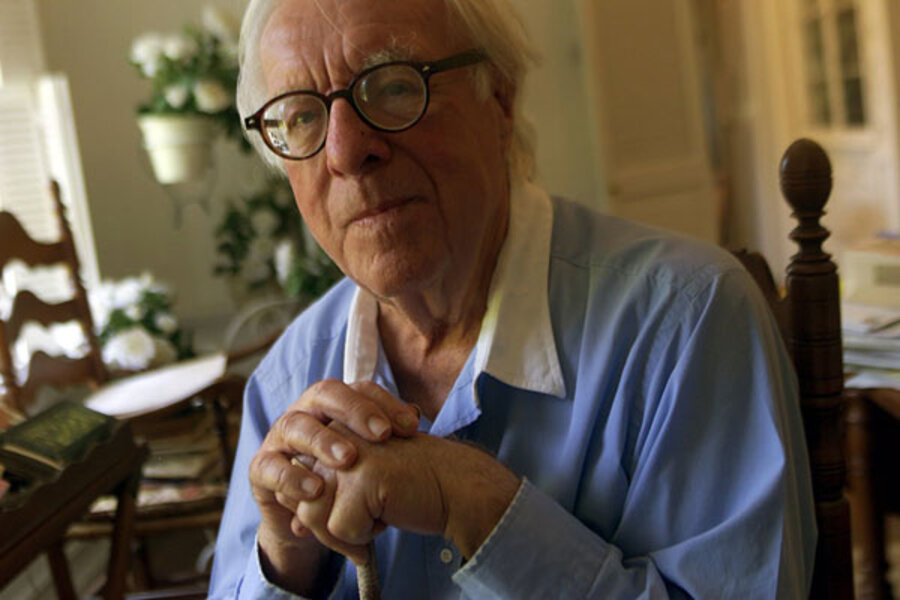Ray Bradbury, a passionate sci-fi writer with the gifts of a painter
Loading...
| Los Angeles
Author Ray Bradbury was a passionate, professional wordsmith who wrote his more than 500 short stories, novels, plays, and poems on a typewriter. He loved the feel and smell of printed words on paper and began a lifelong love affair with libraries at an early age.
Mr. Bradbury, who died late Tuesday, often recounted how he penned his most famous novel, “Fahrenheit 451,” in the basement of the UCLA library where he could rent a typewriter for a dime per half hour.
But, in the end, say colleagues and fans, it is his images that helped elevate the world of science fiction and fantasy from the fringes into the heart of modern American popular culture, paving the way for such mainstream hits as “E.T.” and Harry Potter.
“Bradbury had the gift of a writer, but the soul of a painter,” says Fordham University Professor Paul Levinson, a former president of the Science Fiction Writers of America who knew and worked with the writer on author events.
Bradbury’s short stories were particularly well-suited to being adapted for TV and film, points out Robert Thompson, founder of the Bleier Center for Television and Popular Culture in Syracuse, N.Y. “They were so visual and full of powerful imagery, they were almost like miniature treatments for a movie rather than a piece of literature,” he adds.
“Bradbury just exuded this kind of folksiness that made his works extremely visual,” says George Slusser, a professor emeritus at the University of California at Riverside, which gave Bradbury a lifetime achievement award in science fiction at the Eaton Science Fiction Conference held in 2008.
Bradbury’s most well-known works – such as “Fahrenheit 451,” “The Martian Chronicles,” and “The Illustrated Man,” which all became highly-touted films or TV series – were so successful precisely because they dealt with images in the mind, the stuff of poetry, says Professor Slusser. “He is the last of the great American writers who evoke that kind of Midwestern American world,” he says, artists that include other American greats such as painter Edward Hopper and novelist Willa Cather.
“A lot of science fiction writing came out of that Midwestern, iconic American experience that Bradbury defined,” he adds, pointing to the writer’s Illinois childhood.
Hollywood luminaries paid tribute to Bradbury on Wednesday. Director Steven Spielberg issued a statement calling Bradbury an immortal, adding that he was “my muse for the better part of my sci-fi career.”
However, Bradbury himself eschewed the label of science fiction, preferring the label of fantasy for most of his works other than “Fahrenheit.” “I’m not a science fiction writer,” he once said. “Fantasies are things that can’t happen, and science fiction is about things that can happen.”
Bradbury achieved this sort of iconic power because he largely “didn’t see boundaries in writing,” points out Slusser, noting that Bradbury never attended college and often quoted Mark Twain who once quipped, “never let college get in the way of a good education.”
Bradbury often said he spent his lifetime mining what happened to him up to the age of 12 or 13. He took the stuff of a Midwestern boy’s life – experiences with a traveling carnival and the Tarzan books of Edgar Rice Burroughs, for instance – and wove them into powerful projections of American life and values in a near-future time, such as when Americans might travel to Mars.
Bradbury himself commented at the 2008 UC Riverside conference on just how powerful those dreams still were for him, telling the audience that after his death, his ashes should be sent to Mars.
“I want to be the first dead person on Mars,” he said, “one way or another, I’ll get there.”





